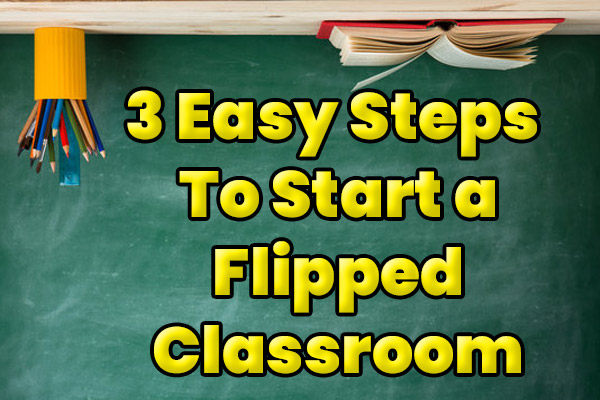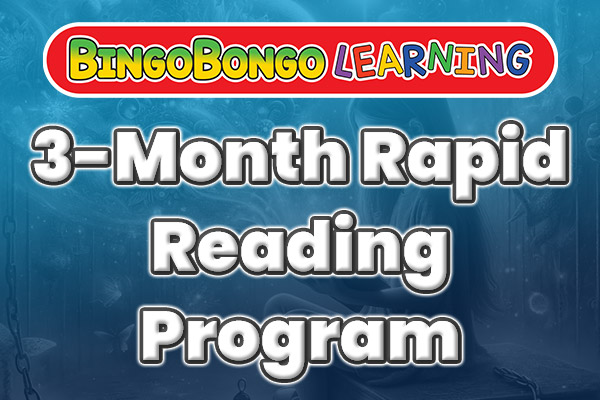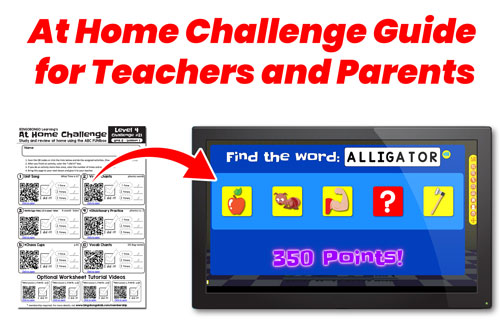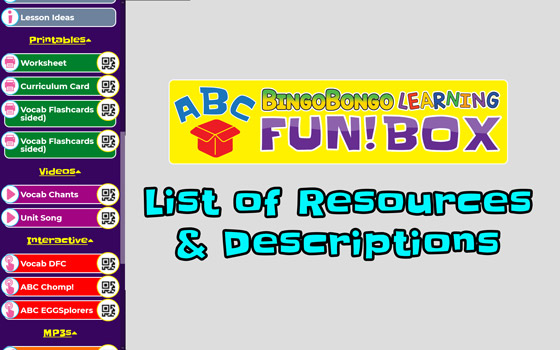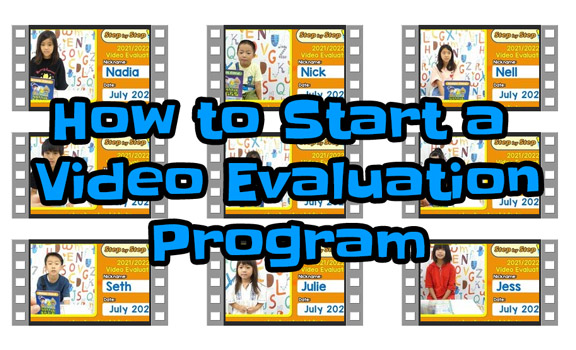These 6 tips will help you prepare perfect EFL/ESL lesson plans for kids every time!

Whether you’re new to teaching English as a second language or a veteran EFL/ESL teacher with years of experience, there are always ways to grow as a teacher and make your lessons more effective. This article will introduce and explain six detailed tips that can help you prepare perfect lesson plans for kids every time. In the second half of the article, there are several videos that illustrate these tips in practice with kindergarten-age students.
The methods and concepts are based on the techniques that I have personally developed over the past 20 years as the head instructor for my own English school, Step by Step Kids English, and as a mathematics instructor at the University of Wisconsin before that.
Many of the examples for planning perfect EFL/ESL lessons for kids outlined below are based on the BINGOBONGO Curriculum and resources, but if you have your own preferred resources, then you can still apply the ideas to your classroom and online lessons.
What is the “Perfect EFL/ESL English Lesson Plan for Kids”?
Before we go any further, now is a good time to point out that there’s no such thing as “perfect EFL/ESL lessons plans for kids.” There are a large number of variables that affect the outcome of lessons. These include various learning styles, teaching styles, differences between the students’ native language and English, cultural differences, and others.
So, let’s agree that when we say “perfect EFL/ESL lesson plans for kids,” we actually mean lessons that are effective at encouraging students to communicate independently in English and motivate students to continue learning English on their own outside of lessons. And as a bonus, lessons that require as little prep time as possible would be nice, too!
Perfect EFL/ESL lesson plans for kids allow for lessons that:
1. Encourage students to communicate independently in English
2. Motivate students to continue learning English outside of lessons
3. Take as little time as possible to prepare
6 tips for creating perfect EFL/ESL lesson plans for kids

Now let’s take a look at the six tips for creating perfect EFL/ESL lesson plans for kids. By applying all six, we will be able to create more effective lesson plans and minimize the planning time required. This section will outline the basic ideas and principles, and the section below will illustrate them with video clips from actual lessons.
1. EFL/ESL lesson plans for kids should be based on repetition
Repetition is highly valued in language learning. When teaching kids, creating lesson plans with the same activities and drills week after week is beneficial for a number of reasons.
First, it allows students to confidently learn foundational grammar patterns and expressions naturally without thinking. Second, students of varying ability levels can learn together since the activities are carried out every week, and new students can learn from advanced students through peer interaction in language learning.
2. EFL/ESL lesson plans for kids should include weekly, monthly, and yearly review
Doing an activity to review the lesson from the previous week is recommended, but allowing enough time between teaching new material and reviewing is also highly beneficial. For this reason, choosing a curriculum that repeats content over months and years will naturally allow students to internalize more English vocabulary and expressions.
Our EFL/ESL coursebooks, called BINGOBONGO FUN!books, were designed to accomplish this task. Students using FUN!books will always have the chance to review old material from previous months and years when studying. This is one of the underlying principles of the START Method for EFL/ESL language learning developed and implemented at Step by Step Kids English School in Japan.
3. Base EFL/ESL lesson plans for kids around problem-based language learning
Problem-based learning is a method of education that encourages students to develop critical thinking skills and learn by solving various problems. One way to apply this to English education is to teach students English phrases and expressions that will allow them to solve problems or complete tasks in lessons.
One example of problem-based learning applied to EFL/ESL lesson plans for kids is to create a rule that prohibits students from bringing pencils, erasers, or other school supplies to lessons. This creates the problem of students not having a way to write. Therefore, they must communicate in English to borrow a pencil.
Depending on the level or age of the students, you can “build up” the English expressions used by students to solve the problems over time, repeating the process in every lesson over several years as follows.
Of course, you could also create a question-and-answer dialog in a similar fashion. The more “English problems” you can create in your lessons for students, the faster they will associate English with valuable, real-life communication. More examples of problem-based language learning are in the videos below.
4. Incorporate “real English” into EFL/ESL lesson plans
The problem-based learning example above where students ask for pencils is one example of natural English communication, which we will call “real English.” This means that students are learning vocabulary and expression in the context of communication, as opposed to repeating single words on flashcards, for example.
When making EFL/ESL lesson plans for kids, it’s important to incorporate as much “real English” as possible, whether it’s through repetitive activities or based on worksheets.
It’s also important to note that many English lessons tend to focus heavily on games which can be problematic. While games are a good way to motivate students to learn new words and develop muscle memory, many times games take away the communication potential of the English, and students are unable to apply it to real-life situations.
For example, many students learn “rock, paper, scissors” in the context of a game, but are unable to ask, “Can I use scissors, please.” This is because playing janken (Rock, Paper, Scissors) doesn’t provide context when teaching the words. Since it’s common for EFL/ESL students to only study English once or twice per week, using “real English” activities that teach vocabulary and grammar in context will be much more effective and valuable for students.
5. Choose a curriculum with everything ready to go
Many teachers spend a lot of time searching for worksheets, making games, or preparing other activities for every lesson, every day. This can add up to hundreds of hours every year. By choosing a curriculum with all of the worksheets, flashcards, songs, videos, chants, and interactive activities ready to go, you’ll have much more time to spend on more important things, like taking a break once in a while!
The BINGOBONGO Curriculum has over 1200 worksheets conveniently organized in ten levels with 400 lessons. The ABC FUN!box also lets teachers choose the resources for lessons in seconds. The program was created by experienced teachers wanting to build the most effective system possible, and we think you’ll agree that it’s pretty amazing at saving time!
You can read more about the ABC FUN!box and its features here.
6. EFL/ESL lesson plans should include out-of-class activities
Most EFL/ESL lesson plans for kids will benefit by having a list of tasks or activities that students can do outside of lessons to continue to learn and review. This is called “flipped learning,” and it’s a highly effective method for teaching English as a second language.
When you are able to get students to learn and review vocabulary and grammar at home, you will be able to spend more time in lessons focusing on “real English” communication.
A simple method of applying flipped learning to EFL/ESL lesson plans for kids is to have students watch videos or listen to songs at home. Unfortunately, simply giving students DVDs and CDs to watch at home isn’t enough. Many times only a small percentage of students actually do the tasks outside of lessons. An alternative approach is to use QR codes or links to do online tasks at home.
The MyQR codes and MyLinks that we create in the ABC FUN!box have been incredibly effective for flipped learning in our school. We currently have over 90% of our students completing this flipped learning component every week, called the “At Home Challenge.” Students are learning vocabulary and spelling words much faster now that we’re using the ABC FUN!box instead of the CD/DVD approach.
What is the best lesson routine for EFL/ESL lessons?

Now that we’ve covered the necessary components for the perfect EFL/ESL lesson plans for kids, let’s take a look at the basic lesson routine that we like to use at Step by Step Kids English School in Japan.
1. Warm-up (5 – 15 minutes)
Kids might have a lot of energy when coming to class or they might be sleepy. Either way, a good warm-up activity will help the English gears start turning. This is a great time to greet students at the door so that they can hand in their homework and ask to come in.
Starting the class with a routine that includes taking attendance, practicing emotions and feelings and “How are you?”, and doing Q&A time based on BINGOBONGO Sticktionaries or Talking Posters will let students review a large number of expressions in a fun and efficient manner.
2. Review (5 – 10 minutes)
After the warm-up, it’s a good idea to do a speaking activity to review the previous lesson. If the students have completed the flipped learning assignment, then this will be a good opportunity to apply the vocabulary and expressions to a “real English” activity.
3. Refresh (3 – 5 minutes)
Young learners can only stay focused for so long. That’s why it’s a good idea to throw in a refresher activity. This can be a song or activity that isn’t necessarily related to the lesson’s target vocabulary. Basically, it’s just a three to five-minute activity that helps kids take a mental break.
4. New content and worksheet time (15 – 25 minutes)
In our lessons, we tend to use worksheets as a method of introducing the new content. Many of the BINGOBONGO worksheets are based on a problem-solving process, so when students work through them, they will naturally learn the new vocabulary and expressions. On top of that, students will go home and continue working on the worksheets and do the flipped learning tasks which will help them learn independently and be ready to go for the next lesson.
Example EFL/ESL lesson plan with kindergarten students
Now that we’ve explained all the components of perfect EFL/ESL lesson plans for kids and an ideal lesson routine, let’s take a look at an actual lesson and the specific activities used with four and five-year-olds.
Resources used:
1. FUN!book 1: Super Easy ABCs & 123s
2. ABC FUN!box (Teacher Plus Membership) – Used to quickly prepare in-class activities, songs, chants, as well as creating the flipped learning assignment.
3. Sticktionaries (Each student gets 2 pages of stickers per year to complete two Sticktionary Cards.)
4. Battle Eggs Pet Cards (students bring their own deck of Pet Cards to classes.)
0. Preparation
The preparation for this lesson took about 5 minutes to do the following:
1. Tear out the worksheets from FUN!books that we’ll be using in class and for homework (2 pages).
2. Print out the week’s At-Home Challenge (flipped-learning) page for each student and staple it to their worksheets.
3. Turn on the TV and prepare the classroom tablet. (Casting using Google Home with Chromecast.)
1. Warm-up
Our standard warm-up routine consists of the routine outlined below. As students master the expressions, we always “build up” the language used and try to add new phrases. This warm-up process might seem long, but the beginning of the lesson is when children are most focused, and this approach allows us to incorporate a strong speaking element into our lessons.
1. Greet students at the door
★(Can I wash my hands, please? / Can I have your homework, please? / Here you are. / Can I come in, please?)
2. Come in and get 3 new stickers for Sticktionary Cards while other students are coming in
★(What’s this word? / Where do I put this sticker? / Can you help me, please?/ 1,2,3,4… up to 60)
3. Start the lesson
–Ask about the day/date (What’s the day of the week/month/year/day of the month/time?)
–Ask about the weather (Is it sunny today?/Yes, it is./No, it isn’t. / Was it rainy yesterday? / etc.)
–“Let’s start English class!”
–“Can I sit down, please?”
4. Take attendance
★(Where’s Tim? / I am here. / You are here. / He is here. / She is here. /He is not here. /She is not here. /etc. )
5. Ask “How are you?” after reviewing emotions
★(How are you? / I’m good. / I’m not sleepy.)
2. Review
In this lesson, we used our laminated Sticktionary Cards to review letters and ABC words by asking, “Do you have a ~.” Students get points based on the number of times “Yes, I do” is said. After that, we can practice some numbers and addition on the board together. Even if points are assigned in an activity, I often ignore mentioning the winner to minimize the distraction of competition as much as possible.
3. Refresh
Students sang “There Are 33 Things I Like to Think About” as I checked their completed homework assignments and prepared their homework folders for their new assignments.
4. Review #2 – Battle Eggs
Each student has their own deck of Pet Cards that they bring to each class. Students always love the opportunity to take them out and say all the colors, pets, numbers (11 – 109), shapes, weather, hobbies, months, etc.
5. New content/Worksheet Time
1. Chant video – In the ABC FUN!box or the YouTube playlist for the unit.
2. Hand out worksheets
3. “Can I have a pencil?” communication activity
4. Worksheet time – Students work through the worksheet as I work through the spellings of the words in ABC EGGS plorers (in the ABC FUN!box).
Let’s finish the English class! (Conclusion)
You can watch the entire uncut/unedited lesson described above here on YouTube. Hopefully, this article and sample lesson can be used to help you create English lessons that are more effective, more exciting, and require less time to prepare. When creating the perfect ESL English lesson plans for kids, a carefully thought-out routine that teaches foundational communication skills will be the best approach in most situations.
Of course, the lesson above is just one lesson out of 40 lessons in a year and just one specific age group. While it might not be possible to teach this exact lesson plan in your classes, by following the six tips outlined above, you’ll be sure to come up with a great lesson routine for any age group or skill level. Good luck finding your perfect EFL/ESL lesson plans for kids!




